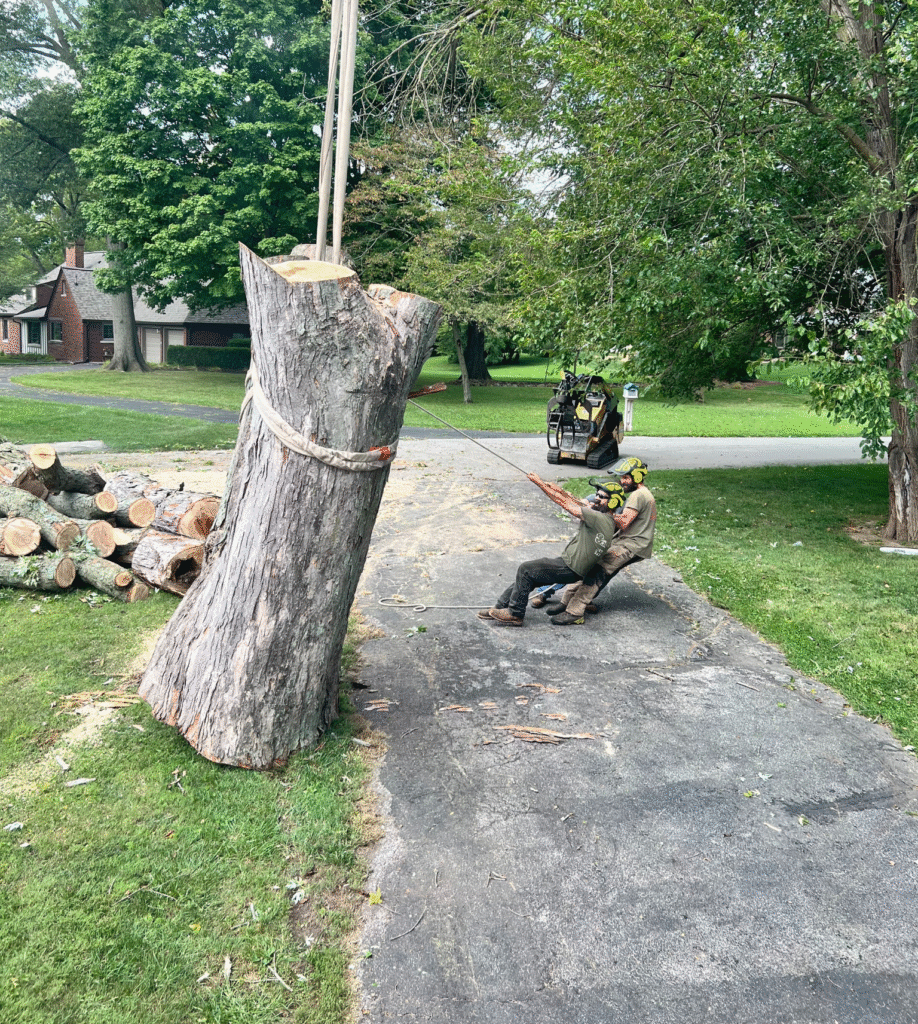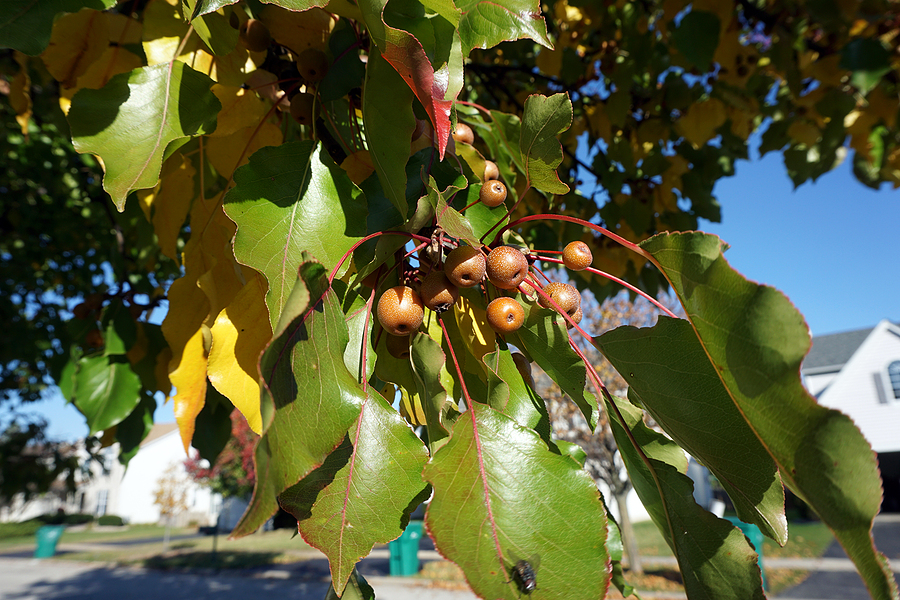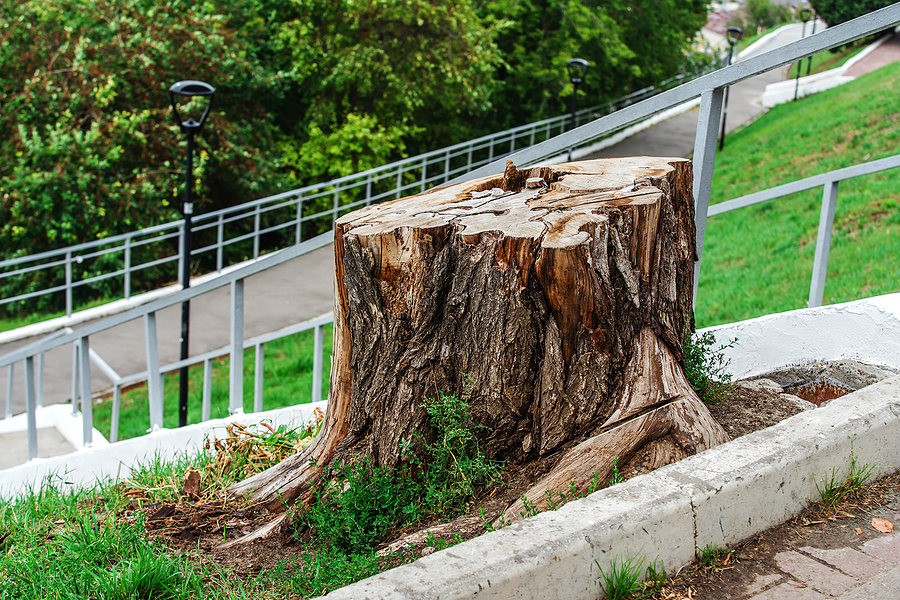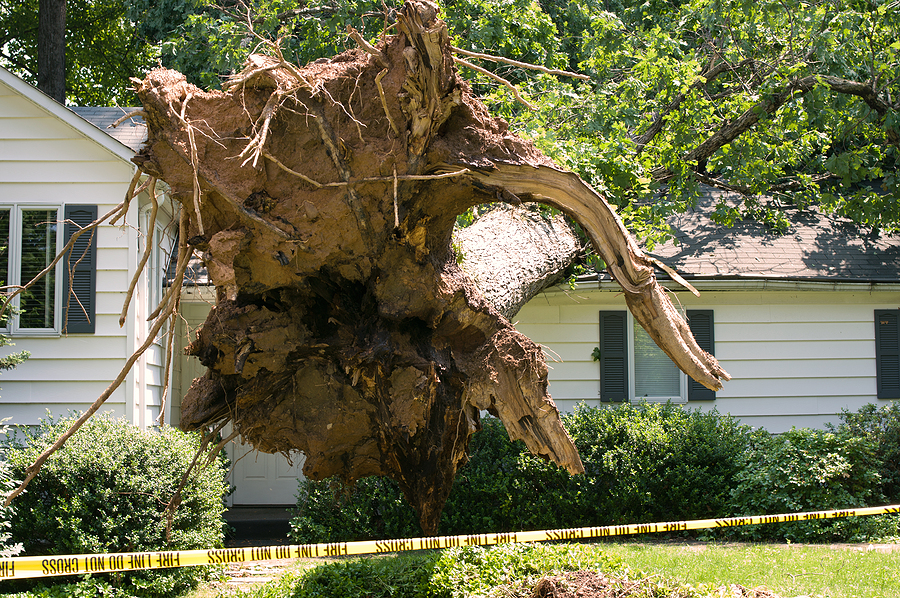After a tree is cut down, you’re often left with an unsightly stump. It can be a frustrating obstacle in your yard, getting in the way of lawnmowers and disrupting the look of your landscape. The immediate thought for many homeowners is to handle the removal themselves. A quick search online might make it seem like a straightforward weekend project, promising a quick and inexpensive solution.
However, removing a tree stump is a task that carries significant risks. It’s more than just a physical challenge; it involves potential dangers to your safety, property, and finances. What seems like a simple DIY job can quickly become a complex and hazardous undertaking. This guide will walk you through the hidden dangers of DIY tree stump removal, helping you understand why sometimes, the best approach is to call in a professional.
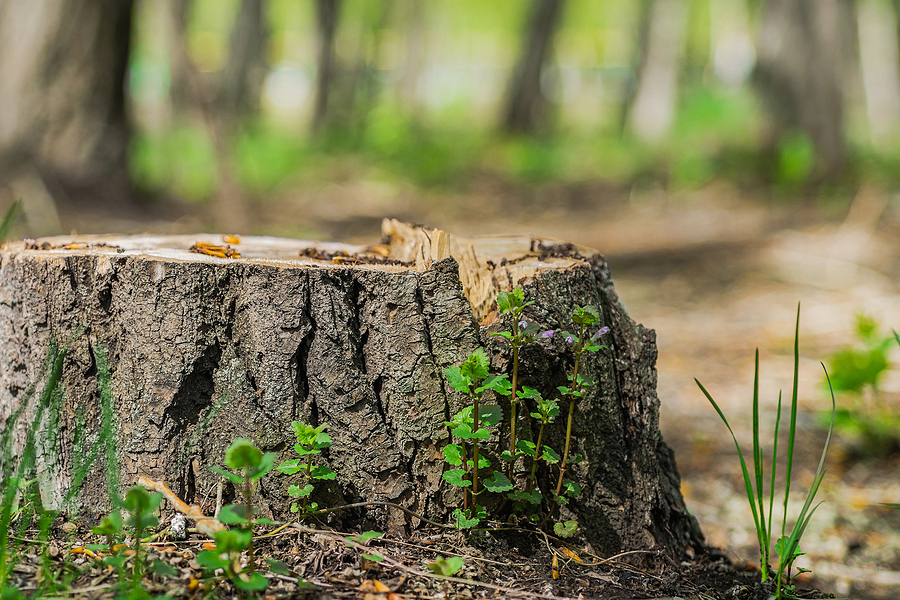
Safety Hazards of DIY Tree Stump Removal
Attempting to remove a tree stump on your own can expose you to several serious safety risks. The tools required are powerful and can be dangerous if not handled with expertise, and the physical labor involved is more demanding than most people anticipate.
Physical Injuries
The most immediate danger comes from the equipment itself. Tools like chainsaws, axes, and stump grinders require proper training and experience to operate safely.
- Chainsaw and Ax Accidents: These tools can easily cause severe cuts and lacerations if they slip or kick back. A moment of inattention is all it takes for a serious accident to occur.
- Stump Grinder Incidents: Stump grinders are heavy, powerful machines that can be difficult to control. They can throw debris like rocks and wood chips at high speeds, posing a risk to you and anyone nearby. Improper handling can also lead to the machine tipping over or causing direct injury.
- Back and Muscle Strain: The process of digging around a stump, chopping roots, and trying to pull it out of the ground involves intense physical exertion. This can lead to back strain, pulled muscles, and other musculoskeletal injuries, especially if you’re not accustomed to heavy manual labor.
Environmental and Chemical Risks
Some DIY methods suggest using chemicals to accelerate the stump’s decay. While this might seem like a less physically demanding option, it introduces its own set of risks.
- Chemical Burns: Products containing potassium nitrate or other strong chemicals can cause severe skin and eye burns if handled improperly.
- Environmental Contamination: These chemicals can seep into the soil and contaminate groundwater, harming nearby plants and potentially affecting local water sources. This can have a lasting negative impact on your yard’s ecosystem.
- Fire Hazards: Another popular DIY method involves burning a stump. This is not only difficult to control but also poses a significant fire risk, especially during dry conditions. An uncontrolled stump fire can spread underground through the root system, smoldering for days before emerging elsewhere and threatening your home and property.
The Hidden Costs of Tools and Equipment
One of the main reasons people opt for DIY stump removal is to save money. However, the costs can quickly add up, often making it a less economical choice than initially believed.
To remove a stump effectively, you need specialized equipment. Renting a stump grinder, for instance, can be expensive. A daily rental fee might seem reasonable, but you also need to factor in transportation costs to get the heavy machine to and from your property. You may also need to purchase safety gear, such as steel-toed boots, safety glasses, and heavy-duty gloves.
If you choose a chemical stump removal method, the cost of the chemicals themselves, along with a powerful drill to create holes in the stump, can accumulate. When you compare these expenses to the flat fee of a professional service—which includes all necessary tools, labor, and expertise—the DIY route often proves to be surprisingly costly.
Schedule Professional Stump Grinding in Indianapolis ✅
The Investment of Time and Labor
Removing a tree stump is not a quick task. It is a labor-intensive process that can consume an entire weekend, or even longer, depending on the size and type of the tree. The work involves much more than just attacking the visible part of the stump.
First, you must dig a trench around the stump to expose the main roots. Then, these thick, stubborn roots need to be cut with an ax, saw, or chainsaw, which is physically draining work. After severing the major roots, you still have the challenge of prying the heavy stump out of the ground. This entire process requires a significant amount of stamina and persistence. For many, the sheer amount of time and physical effort involved is far greater than they ever anticipated.
Potential for Property Damage
Your yard is a complex environment with more going on beneath the surface than you might realize. DIY stump removal can inadvertently cause significant and costly damage to your property.
- Underground Utilities: Many properties have underground utility lines for gas, water, and electricity, as well as internet cables. Accidentally hitting one of these lines with a grinder or while digging can lead to dangerous leaks, service outages, and expensive repairs.
- Irrigation Systems: If you have a sprinkler or irrigation system, the pipes are often buried just below the surface. It’s very easy to damage these lines during stump removal, leading to leaks and the need for extensive repairs.
- Landscaping and Hardscaping: The force and vibration from a stump grinder, or the upheaval from trying to pull a stump out, can damage nearby patios, walkways, driveways, and garden beds. The surrounding lawn is also likely to be torn up in the process.
The Risk of Ineffective Removal
Even after all the effort, cost, and risk, there’s no guarantee your DIY attempt will be successful. A common issue is incomplete removal. If the main taproot and a significant portion of the root system are left behind, the tree can begin to regrow. Shoots and suckers may start to sprout from the remaining stump and roots, leaving you back where you started.
Furthermore, a partially removed stump can begin to rot, attracting pests like termites, ants, and beetles. These insects can then spread to other healthy trees in your yard or even find their way into your home. A professional tree service company ensures the entire stump and major root system are ground down completely, eliminating the possibility of regrowth and infestation.
Let the Professionals Handle It
Hiring a professional tree service for stump removal offers peace of mind and guarantees the job is done right. Professionals bring expertise, specialized equipment, and a commitment to safety that you simply can’t replicate with a DIY approach. They can efficiently and thoroughly remove the stump, handle all the cleanup, and do so without damaging your property.
If you have an unsightly stump in your yard, consider the real costs and dangers of removing it yourself. For safe, efficient, and complete tree and stump removal services in the Indianapolis area, Contact Our Team of experts today. We have the skills and equipment to restore the beauty and safety of your landscape.
Related Post: Transforming Landscapes: Homeowner’s Handbook to Stump Removal

